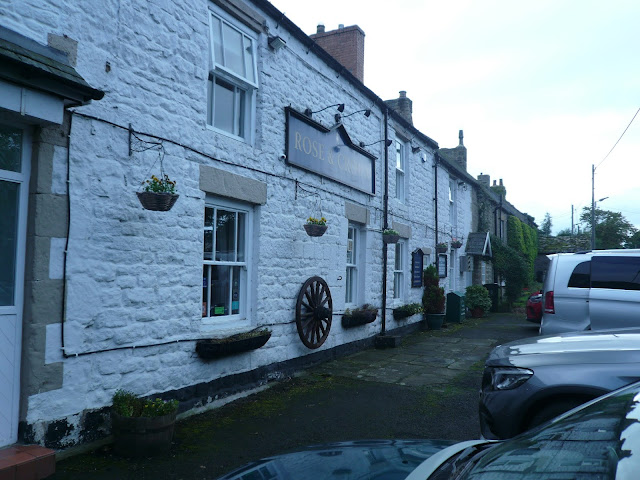Seven go out on the dunes; Northumberland: September 24th.
To welcome back some gadgies who have not joined the weekly ramble for some time we are having the familiar and lovely stroll from Warkworth to Alnmouth almost and back through the dunes.
Today's team is made up of me, Brian, Margaret, Harry, Dave, John H and John C
Small town or large village, Warkworth is near the coast, has a fine ruined castle and good car parking of the Yorkshire variety. Reached by taking the A189 north through Amble, going down the main street and turning into the square by the church, the parking is on the river bank.
Possible without a map but it is covered by OS Explorer 332 Alnwick and Amble.
We did this walk a few weeks ago, it rained, and it rained. Like the proverbial rodents we were soaked through . ."Wet through to your knickers" as my mum always said on days like that.Today is sunny and warm with a strong breeze about three on the Beaufort scale.
Car park on the bank of the River Coquet, Warkworth. Free!St Lawrence's church, Warkworth. Almost entirely Norman. But probably not the spire.
Amble claims to be Northumberland's friendliest port.
At this point we crossed the dunes and headed north on the beach. This is another of the fabulous Northumberland beaches that would be covered with sun loungers backed by a string of tower block hotels if we had warmer weather. Thank goodness for a cooler climate. Because of the pandemic the area has had many more visitors from the UK this year, many from the south completely gobnsmacked by the beauty of the county. Probably still expecting rows of back to back houses and shipyards and coal mines.
The sand is very soft, easier walking to be found nearer the water where it is still wet although nthere are one or two shallow streams to plodge in. (Plodge means paddle )
After about five miles of quiet beach we reached Alnmouth Bay and turned inland on the edge of the River Aln. Directly opposite this pretty village, usually voted one of the best places to live in the north, we climbed the mini hill to the cross that marks, more or less, the site of the original church.
Alnmouth from Church Hill. St Waleric's a 12th century church stood near the hill until it was destroyed by a flood in 1806 which also caused a change in the direction of the river. The replacement church dates from 1876 and is dedicated to St. John the Baptist. It's spire is visible in the centre of the picture.
Below Church Hill is the ruin of a 19th century Mortuary Chapel, weathered and looking Norman but it makes a good picnic spot so we settled down for a Herbie.
Lunchtime in the chapel; apple pies, almond slices, biscuits savory and sweet cakes from Mrs A.
After a leisurely lunch we started back on the walk through the dunes. The path goes by a guano store originally on the pre 1806 river bank and used to store fertilizer. Built away from the village because of the smell.
Evidence of a high tide; deceased jelly fishDeceased guano store.





















































